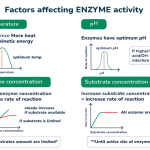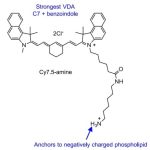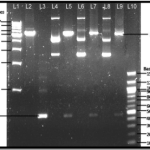The Krebs cycle also known as the Citric acid cycle or Tricarboxylic acid cycle – TCA cycle is one of the most important metabolic pathways for the production of energy in the body. About 65-70% of the total ATP required by the body is synthesized in the Krebs cycle. Krebs cycle simply, is the sequence of reactions that involves the oxidation of Acetyl CoA to CO2 and H2O. About two-thirds of the oxygen consumed in the body is utilized during the citric acid cycle alone.
The Krebs cycle is the final common pathway for carbohydrates, fats, and amino acids which shows its importance in the metabolism of the three most important biomolecules. Along with supplying energy for various metabolic activities in the body, it is also responsible for providing many intermediates required for the synthesis of amino acids, glucose, nucleotides, chlorophyll, etc. The cycle is both anabolic and catabolic. Hence, the Krebs cycle is acclaimed as the most important central pathway connecting almost all the individual central pathways either directly or indirectly.
1.1. History of Krebs cycle:
The Kreb cycle was proposed by British scientist, Hans Adolf Krebs in 1937, based on the studies of oxygen consumption in pigeon breast muscles. His original manuscript on the TCA cycle was published in the journal Enzymoligia. The cycle is named in his honor. He was also awarded a Nobel Prize for Physiology and Medicine in 1973. 1
1.2. Location of Krebs cycle:
In prokaryotes, the Krebs cycle occurs in the cytoplasm along with glycolysis and subsequent transition reactions between them. In the case of eukaryotes, it takes place in the mitochondrial matrix where all those enzymes required for completion of the Krebs cycle are present.
1.3. Transition reaction from Glycolysis to Krebs cycle:
As the end product of glycolysis, two molecules of pyruvate are synthesized. Pyruvate gets decarboxylated into Acetyl coenzyme A by enzyme complex pyruvate dehydrogenase which is also known as Acetyl CoA. This reaction is known as a transition reaction or bridge reaction. In this reaction, electrons are also transferred to NAD+ to form NADH. In eukaryotic cells, like the Krebs cycle, the bridge reaction also occurs in the matrix of mitochondria. However, it occurs in the cytoplasm in prokaryotic cells as prokaryotes lack membrane-bound cell organelles.
1.4. Reactions involved in the Krebs cycle:
The TCA cycle consists of a series of chemical reactions that capture the two-carbon acetyl group from the transition reaction and add it to a four-carbon intermediate in the Krebs cycle, producing a six-carbon intermediate citric acid. Thus, this cycle is also known as a tricarboxylic acid cycle –TCA Cycle since the intermediate product formed i.e. citric acid consists of three carboxyl groups in its structure. As the end products of the Krebs cycle, two CO2 molecules, one ATP molecule, three molecules of NADH, and one of FADH2 are produced.2

Step 1: Formation of citrate: Krebs cycle initiates with the condensation of Acetyl CoA and oxaloacetate, catalyzed by the enzyme citrate synthase.
Steps 2 and 3: Citrate is isomerized to synthesize isocitrate by the enzyme aconitase. This is done in two two-stage reaction of dehydration followed by hydration through the formation of an intermediate cis-aconitase.
Step 4 and 5: Formation of alpha-ketoglutarate: Isocitrate is converted into oxalosuccinate and then oxalosuccinate is further converted into alpha-ketoglutarate in the presence of enzyme isocitrate dehydrogenase. One molecule of NADH and CO2 is also liberated during this stage.
Step 6: Alpha-ketoglutarate is converted into succinyl CoA. This reaction occurs through oxidative decarboxylation in the presence of the enzyme alpha-ketoglutarate dehydrogenase complex.
Step 7: Formation of succinate: Succinate thiokinase converts Succinyl CoA into Succinate. Simultaneously, GDP is phosphorylated to GTP.
Step 8: Succinate is converted into fumarate. This reaction is catalyzed by the succinate dehydrogenase complex. A molecule of FAD is converted into FADH2.
Step 9: Formation of malate: Fumarate is converted into malate with the addition of water. This reaction is catalyzed by fumarase.
Step 10: Conversion of malate to oxaloacetate is catalyzed by Malate dehydrogenase. A molecule NADH is also formed.
Thus, formed oxaloacetate can combine with another molecule of acetyl CoA and continue the cycle.1
The events of the Krebs Cycle can be expressed in the equation below:
Acetyl CoA + 3NAD+ +FAD + GDP + Pi + 2H2O = 2CO2 + 3NADH + 3H+ + FADH2 + GTP + CoA
1.5. Energetics of Krebs Cycle:
One complete Krebs cycle produces three NADH and a single FADH2 molecule. Oxidation of three NADH by electron transport chain along with oxidative phosphorylation results in the synthesis of 9 ATPs. Likewise, FADH2 leads to the formation of two ATP. One substrate-level phosphorylation also occurs. Thus, a total of 12 ATPs are produced from one complete Citric acid cycle.3
1.6. Regulation of Krebs Cycle:
The Krebs cycle is regulated either by enzymes or by the level of ADP. Citrate synthase, Isocitrate dehydrogenase, and alpha-ketoglutarate dehydrogenase are chiefly involved in this regulation.
- ATP, NADH, Acetyl CoA, and Succinyl CoA inhibit citrate synthase.
- ADP activates isocitrate dehydrogenase. ATP and NADH are responsible for its inhibition.
- Succinyl CoA and NADH are responsible for the inhibition of Alpha-ketoglutarate dehydrogenase.
- Availability of ADP: ADP is essential for the TCA cycle to proceed. This is because during the lack or absence of ADP, oxidation of NADH and FADH2 through the electron transport chain stops. The increasing accumulation of NADH and FADH2 inhibits the enzymes as explained above. It also limits the supply of NAD+ and FAD+ which are vital for TCA cycle.
1.7. Significance of Krebs Cycle:
- Krebs cycle produces several intermediate compounds. These intermediate compounds can be used in the formation of biomolecules such as nucleotides, amino acids, glucose, chlorophyll, etc
- Krebs cycle synthesizes energy which is utilized for various metabolic activities of the cell.
- Complete oxidation of Acetyl CoA occurs.
- It integrates major metabolic pathways.
- The carbon skeleton of amino acid finally enters the citric acid cycle.
1.8. Clinical relevance of Krebs cycle:
Dysfunction in the Krebs cycle leads to various conditions like Pyruvate dehydrogenase complex deficiency (neurodegenerative disorder), Leigh Syndrome (neurological disorder), Thiamine deficiency, and Fumarase deficiency (rare autosomal recessive metabolic disorder). Researchers have also revealed that isocitrate dehydrogenase mutation in several cancers including Leukaemia, Gliomas, and Sarcomas.4
REFERENCES:
- Satyanarayan U, Chakrapani U. Biochemistry. Fourth. Reed Elsevier Private Ltd & Books and Allied (P) Ltd.; 2013.
- Clark MA, Choi J, Douglas M. Biology 2e. Second. The Rice University Press; 2020.
- S.C. Rastogi. Cell and Molecular Biology. Third edition. New Age International Publishers
- Alabduladhem TO, Bordoni B. Physiology, Krebs Cycle. StatPearls Publishing





